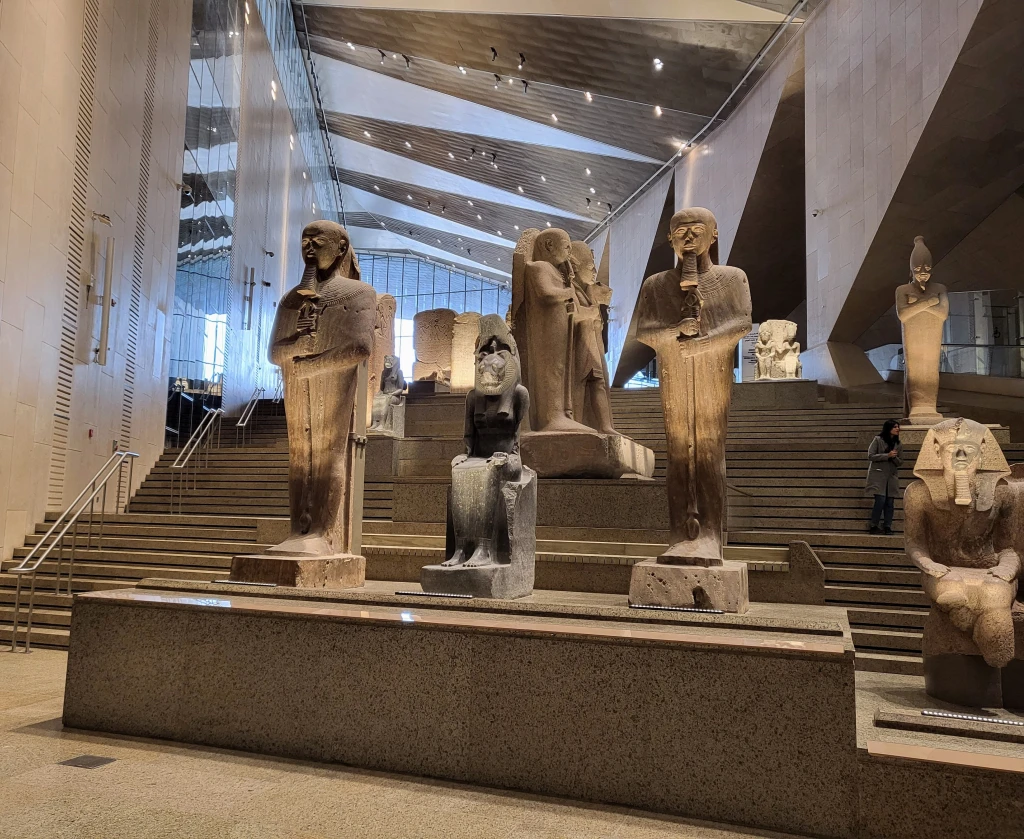8 Must-Visit Pharaonic & Archaeological Museums in Egypt
If you’re fascinated by the wonders of ancient Egypt, there’s no better way to explore its heritage than through the incredible museums across the country. These museums preserve thousands of years of treasures — from golden masks and royal mummies to colossal statues and sacred scrolls. Walking inside them feels like stepping into an ancient Egyptian temple, where history, culture, and faith come alive before your eyes.
Many of these museums also connect Egypt’s monuments with global heritage. For example, Abu Simbel Temple on the shores of Lake Nasser is a key part of the Nubian Monuments, recognized as a UNESCO World Heritage Site. The treasures found in museums across Egypt give context to such great landmarks and highlight their timeless importance.
Here are 8 of the most important pharaonic and archaeological museums in Egypt you can visit today:
1- The Egyptian Museum in Tahrir (Cairo)
The beating heart of ancient Egypt. Housing over 120,000 artifacts, including Tutankhamun’s golden treasures and royal mummies, this museum offers an unmatched journey into Egypt’s past. Its galleries include statues of Ramses II, intricate jewelry, and papyri that shed light on daily life. Visiting here feels like entering a treasure chamber designed to rival the grandeur of Abu Simbel Temple itself.
2- The Grand Egyptian Museum (Giza – opening soon)
Soon to be the largest archaeological museum in the world, located just minutes from the Pyramids of Giza. It will showcase the complete Tutankhamun collection with modern displays and interactive features. The museum will also house massive artifacts like statues of Ramses II, carefully restored and presented to honor the legacy of ancient Egypt. With its proximity to both the pyramids and the Solar Boat, it forms a cultural hub linking Cairo to the desert temples of Abu Simbel.
3- National Museum of Egyptian Civilization – NMEC (Cairo)
This modern masterpiece in Old Cairo is home to the famous Royal Mummies Hall. Here you can see real mummies of powerful pharaohs such as Ramses II, Seti I, and Queen Hatshepsut, preserved in dramatic lighting. The museum is also dedicated to the broader cultural history of Egypt, showing how its people shaped civilization from the Nile Valley to the temples along Lake Nasser.
4- The Imhotep Museum (Saqqara)
Dedicated to Imhotep, the architect of the Step Pyramid, this museum highlights the brilliance of Egypt’s Old Kingdom. Exhibits include tools, statues, and inscriptions from Saqqara’s ancient tombs, showing how the genius of Imhotep paved the way for later architectural wonders like the colossal Abu Simbel Temple carved into the Nubian cliffs.
5- Mummification Museum (Luxor)
A small yet powerful museum that explains the secrets of how ancient Egyptians prepared the dead for the afterlife. Visitors can see embalming tools, mummified animals, and canopic jars used to preserve organs. These techniques were the same ones applied to pharaohs buried near Abu Simbel Temple, reinforcing the connection between life, death, and eternity in ancient Egyptian belief.
6- Luxor Museum
One of the finest curated museums in Egypt. It houses beautifully preserved statues, royal jewelry, and a royal mummy. Artifacts discovered in the Luxor and Karnak area are presented with clarity, allowing visitors to appreciate their artistry. This museum connects directly to the temples along the Nile, echoing the grandeur of Abu Simbel and other Nubian monuments.
7- Crocodile Museum (Kom Ombo)
Situated next to the Kom Ombo Temple, this museum displays dozens of mummified crocodiles and artifacts related to Sobek, the crocodile god. The unique finds illustrate the strong spiritual connection Egyptians had with their environment. Just as Abu Simbel Temple was aligned with the rising sun, these exhibits show how nature shaped spiritual life along the Nile.
8- Solar Boat Museum (Giza – being moved to GEM)
This museum once held a 4,500-year-old cedar boat discovered near the Great Pyramid, believed to accompany the pharaoh in his journey to the afterlife. Soon, it will be displayed inside the Grand Egyptian Museum for millions to admire. Like the relocation of Abu Simbel Temple to save it from flooding by Lake Nasser, the transfer of the Solar Boat reflects Egypt’s dedication to preserving its priceless heritage.
Why Visit Pharaonic Museums in Egypt?
-
Walk among real artifacts crafted by ancient hands.
-
See royal mummies, sacred texts, and lost treasures.
-
Connect museum collections to monumental sites like Abu Simbel Temple.
-
Experience Egypt as part of a living UNESCO World Heritage Site.
These museums don’t just preserve history — they let you feel the soul of ancient Egypt.
🌍 Explore Egypt with Egypt Safari Tours
At Egypt Safari Tours, we design unforgettable journeys into the world of the pharaohs. Our guided museum tours bring the past to life with stories and insights that connect artifacts to temples, tombs, and the timeless Abu Simbel Temple.
✨ Ready to step inside 5,000 years of history?
Check our cultural tours here → [Explore Tours Here]




